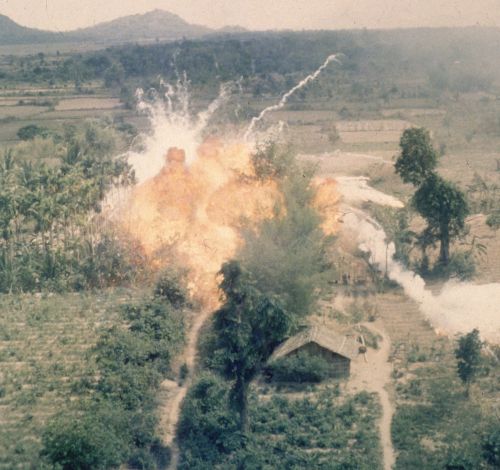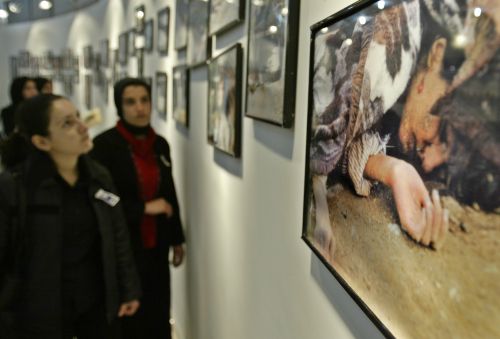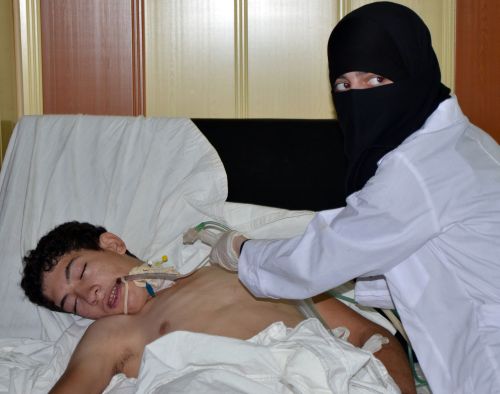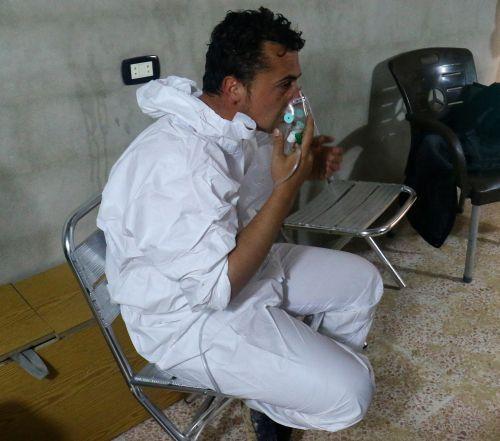-
1915-18

In April 1915, Germany mounted the first large-scale chemical attack in warfare when it opened canisters of chlorine upwind of French, Canadian and Algerian troops at Ypres in Belgium, allowing prevailing winds to spread the gas. By the end of World War I in 1918, the estimated death toll from the use of chemical weapons -- mainly chlorine, phosgene and mustard gas, used by both sides -- was around 90,000, with more than one million casualties overall.
-
1935-36

Ignoring the 1925 Geneva Protocol which it signed along with 15 other major countries committing them not to use chemical agents in war, fascist Italy unleashed mustard gas during its invasion of Ethiopia in the second Italo-Abyssinian War.
According to the Stockholm International Peace Research Institute, a precise casualty toll may never be determined. But it said a Soviet estimate stated that 15,000 of the 50,000 Ethiopian casualties in the war were from poison gas.
-
Vietnam War

Operation Ranch Hand, the US military's chemical weapons programme during the Vietnam War from 1961 to 1971, saw the use of Agent Orange.
The United States military sprayed nearly 20,000,000 US gallons of material containing chemical herbicides and defoliants mixed with jet fuel in Vietnam to defoliate forested and rural land.
The Vietnam Red Cross reported that as many as 3 million Vietnamese people have been affected by Agent Orange. At least 1,50,000 children were born with birth defects.
According to Vietnam an estimated 4,00,000 people were killed or maimed.
Napalm was another substance that became infamous during the Vietnam War. A sticky, gasoline-like substance that could melt skin was developed in a secret laboratory at Harvard University in Massachusetts.
It was employed for its tactical as well as psychological effects. Reportedly, about 388,000 tons of napalm bombs were dropped in Vietnam between 1963 and 1973.
-
March 1988

When Iran and Iraq were at war between 1980 and 1988, Iraqi forces used mustard and nerve agents in the Kurdish town of Halabja in Southern Kurdistan, killing up to 5,000 people, mostly civilians.
It was an act of act of genocide against the Kurdish people in Iraq.
Iraqi aircrafts dropped chemical bombs on Halabja's residential areas in a five-hour attack.
Saddam Hussain's cousin Ali Hassan al-Majid, who ordered the attack, came to be known as Chemical Ali.
-
March 1995

At the height of the morning rush hour in Tokyo, Japan, five two-man terrorist teams from the Aum Shinrikyo religious cult, riding on separate subway trains, converged at the Kasumigaseki station and secretly released the lethal sarin gas into the air.
Twenty people died, and 5,500 were treated in hospitals, some in a comatose state. Most of the survivors recovered, but some victims suffered permanent damage to their eyes, lungs, and digestive systems.
In the attack's aftermath, Japanese police raided Aum Shinrikyo headquarters and arrested hundreds of members, including the cult's blind leader, Shoko Asahara.
In the years since the 1995 attack, five Aum members have been sentenced to die for the murderous acts committed by the cult at Kasumigaseki station and elsewhere, and others have been sentenced to varying prison terms. Shoko Asahara, was sentenced to death by hanging in February 2004, but continues to appeal the decision.
-
August 2013

In August, the Syrian government was suspected of using chemical weapons against its civilians. Hundreds of people suffocated to death in the rebel-held suburbs of the Syrian capital, with many suffering from convulsions, pinpoint pupils, and foaming at the mouth.
The United Nations investigators visited the sites and determined that ground-to-ground missiles loaded with sarin were fired on civilian areas while residents slept. The US and others blamed the Syrian government, the only party to the conflict known to have sarin gas.
According to a US intelligence report, 1429 people lost their lives, including 426 children.
-
April 2017

On April 4, a targeted chemical attack was carried out on the rebel-held town of Khan Sheikhoun in Idlib province, one of the deadliest since the Syrian war began six years ago.
Around 75 people have died, including 10 children and the toll is expected to rise.
The World Health Organization said victims bore the signs of exposure to nerve agents, and Amnesty International said evidence pointed to an "air-launched chemical attack."